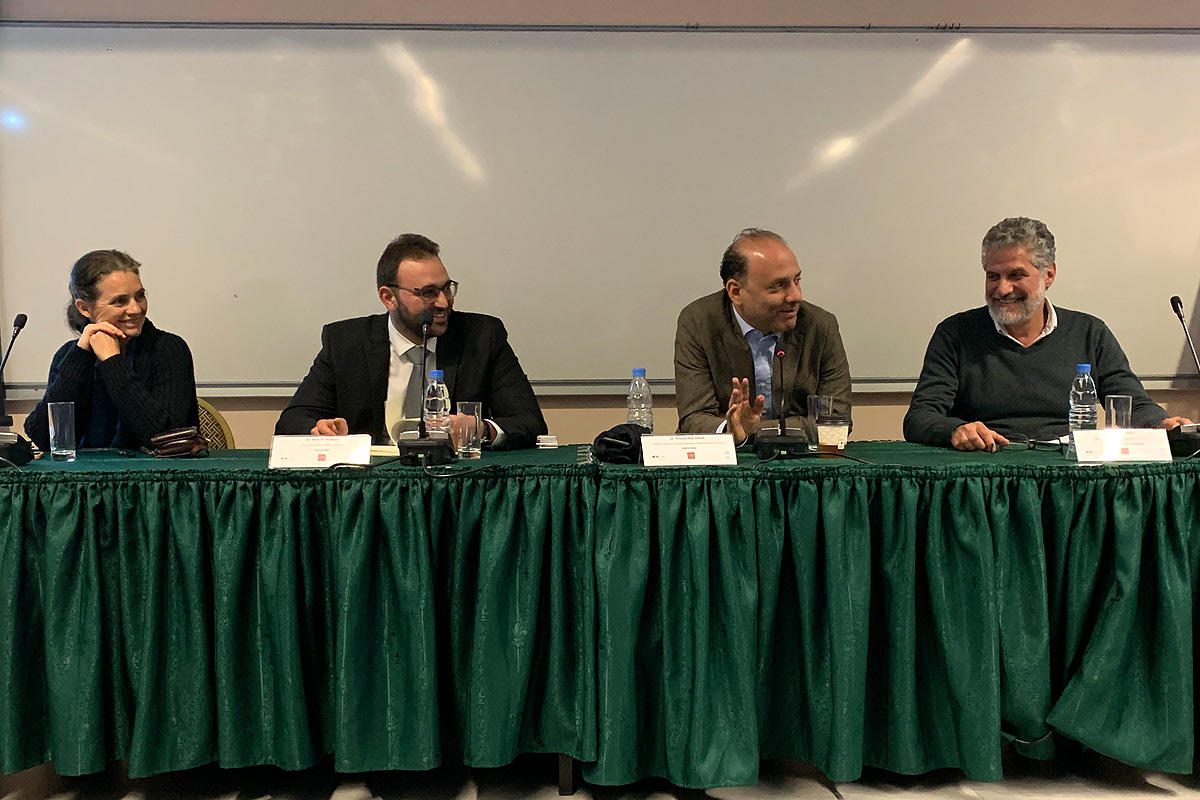The Best Way to Measure Poverty
LAU’s Economics Department hosted Oxford Professor Sabina Alkire, who tackled the multidimensional poverty measurement approach using global MPI.
For decades, societies across the region have been crying out for social justice and economic equality. The issue seems even more acute in this age, prompting experts to ask, can the Middle East endure another generation of declining incomes, rising disparities and persistence of poverty?
This question was tackled in a lecture organized earlier this month by the Department of Economics and the United Nations Economic and Social Commission for Western Asia (UNESCWA) on measuring multidimensional poverty in the Middle East.
In his opening speech, LAU Professor and Economics Chair Ghassan Dibeh stressed the importance of the poverty and inequality question in Lebanon and the Arab world.
“Can the region tolerate another generation of marginalization and informality?” he asked. “This is a question that the new group of economists and policymakers must contribute to answering.”
First to speak was Professor and Director of the Oxford Poverty & Human Development Initiative Sabina Alkire, who outlined the factual definition of poverty with an emphasis on measuring it globally.
Relying on mathematical modeling and formulization, Dr. Alkire explained the difference between the methodology of measurement in a simple versus multidimensional world.
“In a standard measure, we rely on the income or consumption data per household, where we fix the poverty line and identify the poor using one of the different measurement formulas,” she said. “What’s distinctive in the multidimensional world is that poverty might occur in the deprivation of health, education, living standards or even malnutrition. This means that we eventually have to aggregate the measure into an overall meaningful one.”
She stressed the importance of using the Global Multidimensional Poverty Index (MPI) in assessing poverty at the individual level, as “The MPI’s value remains in measuring the level of poverty and number of poor people in detail. You can therefore see in what specific aspects they are poor the most.”
The MPI is an assessment of acute poverty covering more than 100 developing countries. It complements traditional income-based poverty measures by capturing the severe deprivations that individuals face with respect to education, health and living standards.
Following Dr. Alkire’s presentation, UNESCWA’s Dr. Khalid Abu-Ismail and Dr. Bilal Al-Kiswani addressed the conceptual and policy relevance of the Alkire-Foster Multidimensional Poverty Framework, which Dr. Alkire developed with fellow economist James Foster.
Dr. Abu-Ismail, who is UNESCWA’s chief of economic development and poverty, described how the multidimensional poverty measurement concept has come a long way.
“Seven years ago, we wanted to adopt a narrative that expressed the conditions of poverty as well as extreme poverty. Today, I am keen to announce that the Arab Developmental Summit adopted multidimensional poverty as one of the top 15 priorities of the region following the hard work executed by Oxford, the United Nations and UNICEF.”
In turn, Dr. Al-Kiswani, who is first economic affairs officer at UNESCWA, emphasized that more people need to follow this method in analyzing multidimensional poverty.
“What we are trying to do with the regional Arab MPI is find a measure closer to the region’s current situation,” he explained.
“I believe we have to follow the same conceptual framework in order to obtain a proper definition of poverty that relates to the context of the country, its policy, ambition and vision, as well as recognize the added value of this multidimensional poverty index to the policymakers.”
The experts hope that by measuring the specific needs of the region’s poor, they can help authorities outline plans to remedy the problem, bettering countless lives.
